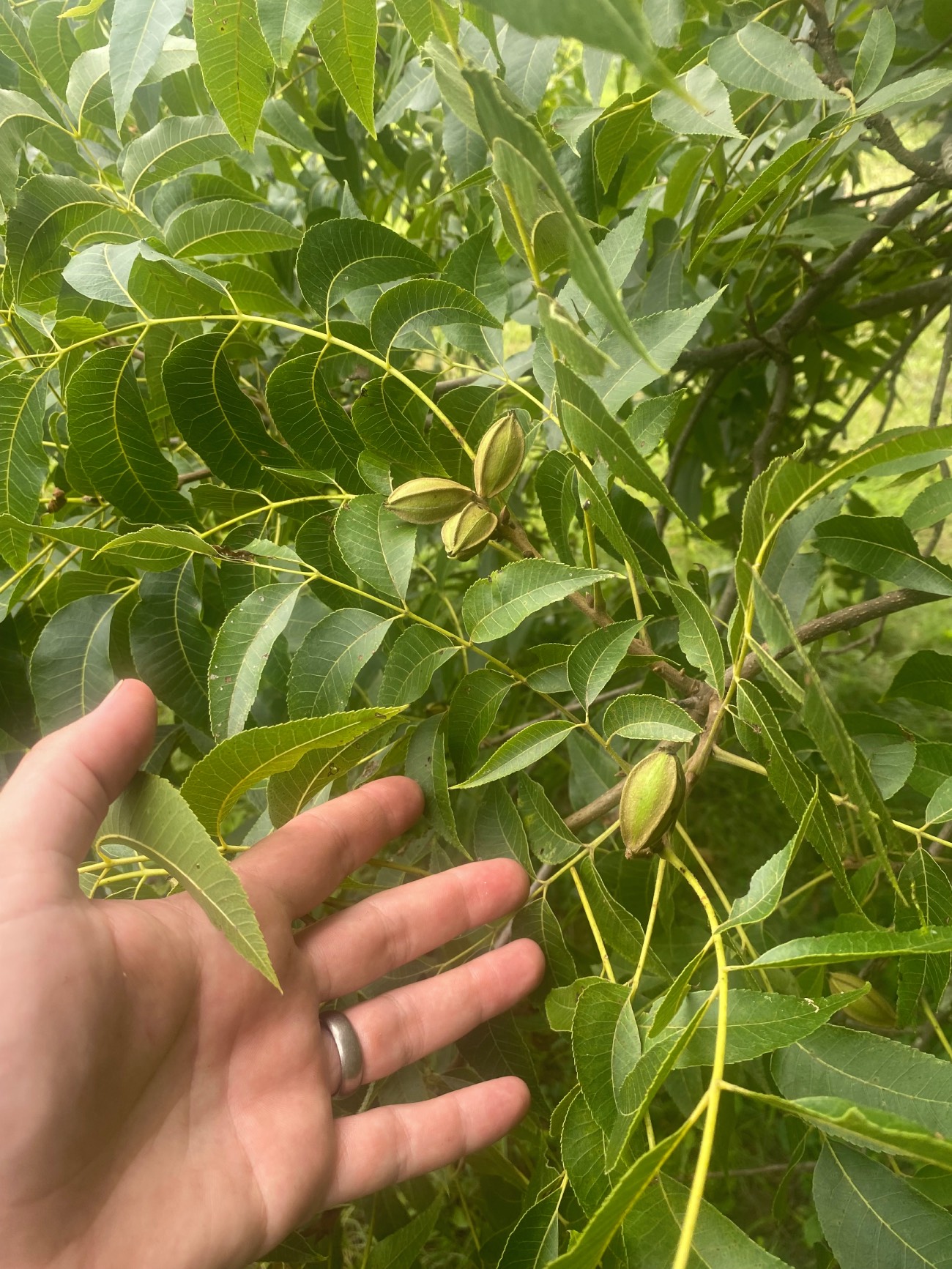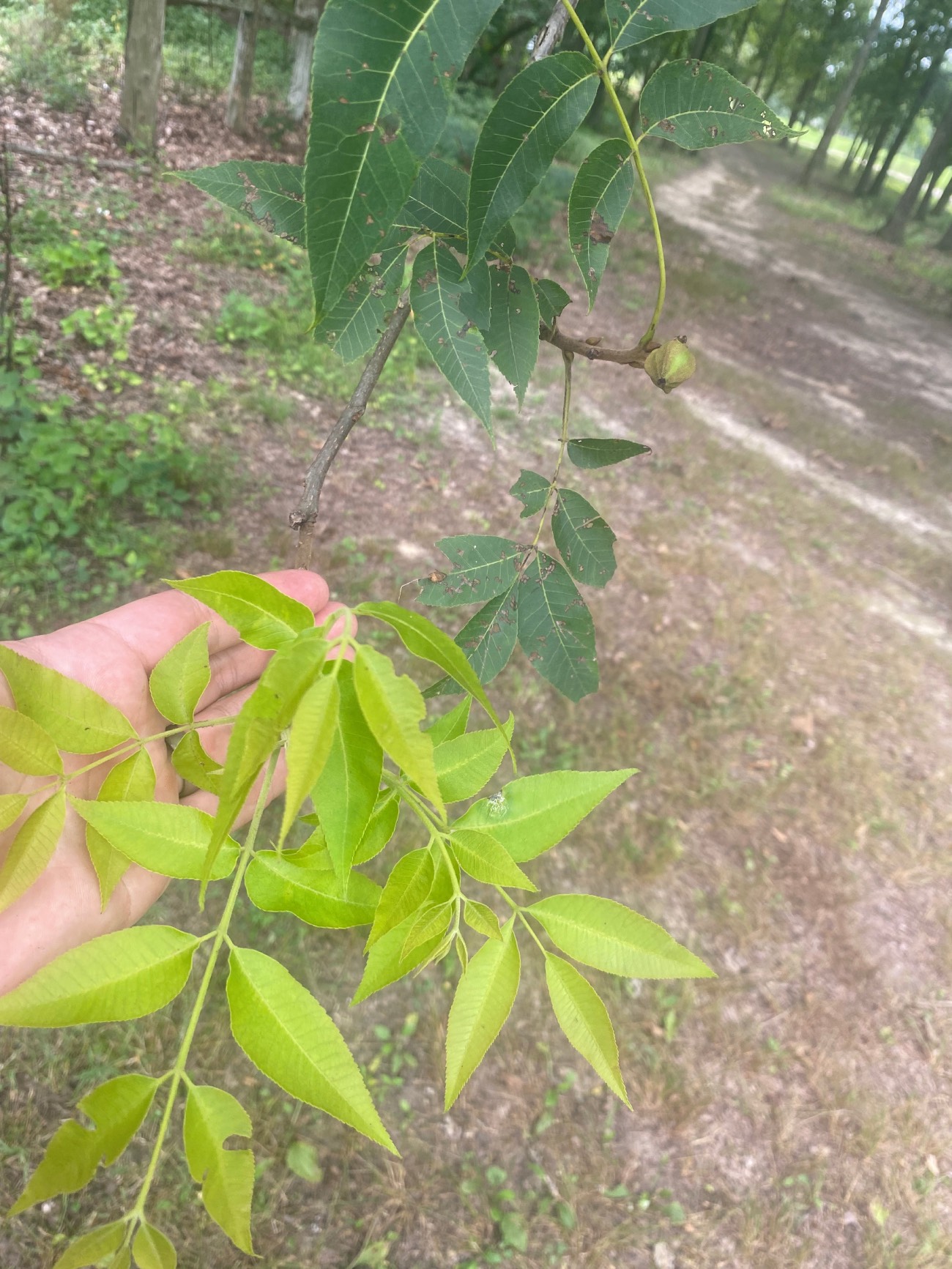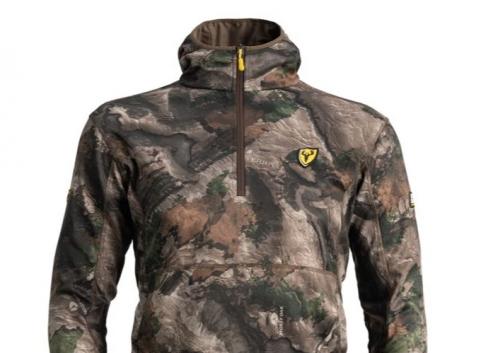Chris Bridges
The diverse flora of North American provides land managers with a variety of options for growing hard mast producing species. While often attention is placed on selecting red or white oaks that are appropriate for different sites and soils, it is important to recognize that there are other suitable hardwoods available. Sweet pecan is an important hardwood species that provides unique foraging opportunities for deer, squirrels and other species. Because of the widespread use of pecan in nut crop production, there are a variety of agricultural techniques that can be applied to improve pecan mast production in wildlife plantings.
PECAN GROWTH AND REPRODUCTION

Many of us are accustomed to picking pecans from trees or groves that have been planted in yards or farmsteads. Sometimes folks are surprised to learn that the native range of pecan is primarily the bottomlands and floodplains of the Mississippi River valley. Travelers along the interstates running with the Mississippi valley can readily observe tall stands of pecan on well-drained floodplain soils. Pecan typically grows to 100’ - 150’ tall, making it the tallest member of the hickory genus. Given the close genetic relationship with other hickories, it is also interesting to note that hybridization can occur between hickories and pecan.
Successful production of nut crops is dependent upon proper understanding of pollination, which in pecan is worth some study. Both male and female flowers appear on the same tree. However, because self-pollination results in poor quality of nuts produced, it is advantageous for cross pollination to occur between different trees. This is most often accomplished in natural stands by natural timing of the appearance of male and female flowers on pecan trees. Because the male and female flowers will appear at different times on the same tree, it is more likely that cross pollination will occur between different trees, thus improving the chances for quality seed production.
In managed pecan orchards, consideration must be given to the establishment of pecans of different cultivars to improve compatibility in flowering times. Similarly, managers looking to optimize seed production for wildlife would be wise to ensure genetic diversity in plantings to improve opportunities for cross pollination and subsequently quality seed crop production. Still, alternative bearing years are common in plantations, with heavy crops being produced one year and light crops sometimes being produced in the next year. Obviously, climate, pests and other factors are highly influential in pecan nut production.
USING PECAN IN WILDLIFE PLANTINGS

When evaluating any investment in wildlife plantings, the first step is to consider the inherent soil and site characteristics of the farm. Pecans perform best on well-drained, loamy soils. Some simple sampling of soil texture and drainage characteristics should be helpful in the identification of ideal sites for pecan plantings. Pecans can be successfully grown from seed, but purchasing high quality nursery stock can improve the chances for success by more rapidly outgrowing competing vegetation and producing seed more rapidly.
There are many pecan cultivars that are well-suited to different locations. The diverse genetic resources currently available for pecan growers has been developed by many years of breeding and selection of high-quality trees identified in natural stands in different parts of the tree’s native range. It is worth noting the geographic origin of different pecan seedlings before purchase as a means of matching trees to local climate.
Soil sampling and fertilization of pecan orchards is another area of research that nut growers have worked to advance over the last century. Depending on the level of investment you are looking to place into your stand, there is a lot of information available from university extension publications on fertilization programs that will optimize pecan nut production. Most notably, tree response to nitrogen, phosphorus and potassium is well documented. Fertilization is typically started the year after planting. Additionally, pecans can benefit from applications of zinc and other micronutrients. There are several commercial fertilizer blends that will contain micronutrients like zinc and boron, in addition to the primary macronutrients, which will be helpful for growing pecans. New growth is easily distinguished by color and can be sampled for nutrient content to provide fertilizer recommendations by many agricultural labs.
Numerous insect pests and diseases can cause problems for pecan plantings. However, selection of high quality seedlings that are well adapted to a particular region will help to improve disease resistance. Frequent scouting of trees can help to identify insect pests in time to plan for appropriate treatment applications.
Pecan is truly one of the most unique trees native to North America. It provides a nut crop that is edible for people, as well as deer, squirrels and other wildlife that are often managed for. It provides a dense shade and is a long-lived tree. When looking for diversity in wildlife plantings in well-drained loamy soils, consideration should be given to including pecan in the mix as a means of increasing the likelihood of success for wildlife mast crop production.






























